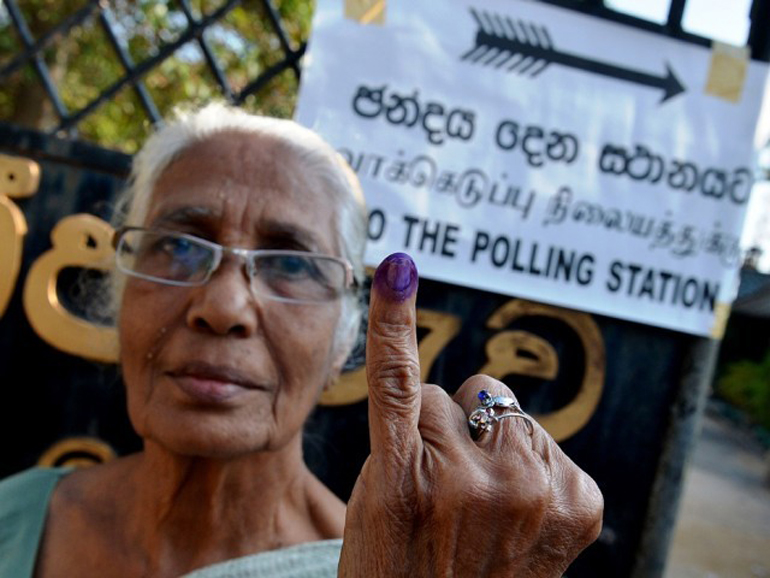Wednesday Feb 12, 2025
Wednesday Feb 12, 2025
Saturday, 25 July 2015 00:00 - - {{hitsCtrl.values.hits}}
 The number of registered voters has increased to 15,066,426 from 14,088,550 in 2010
The number of registered voters has increased to 15,066,426 from 14,088,550 in 2010
General election day 2015 – 17 August – is not too far away. Out of 6,151 candidates – 3,653 of them from political parties and 2,498 from independent groups – only 196 will get the approval of the people to sit in Parliament – the eighth under the present constitution of the Democratic Socialist Republic of Sri Lanka.
Though the number is over 6,000, it’s less than the nominations received for the 2010 general election. That year, a record number of 7,680 nominations were handed over – the highest number ever to contest a general election.
The number of registered voters has increased to 15,066,426 from 14,088,550 in 2010. Total number of voters who turned up to vote last time was 61.26%.
Of the 22 electoral districts, the largest number of candidates (792) this year is from the Colombo District followed by Gampaha (588) and Kurunegala (468). Over 300 candidates are contesting in three districts – Batticaloa (368), Mahanuwara (360) & Digamadulla (310).
The numbers exceed 200 in nine – Kalutara (286), Ratnapura (280), Puttalam (264), Nuwara Eliya (253), Vanni (252), Anuradhapura (242), Kegalle (228), Galle (221) and Jaffna (210). Of the rest, Matara (187), Matale (176), Hambantota (170), Badulla (165) and Trincomalee (147) have over 100. The least numbers are in Monaragala (96) & Polonnaruwa (88).
This is the seventh general election to be held after the introduction of the ‘Manape’ – Proportional Representation under the present constitution. The first was the 1989 election when nominations were handed in by 1,396 candidates from over 20 parties and seven independent groups. Several parties banded together to contest the election. As the years passed the alliances and coalitions began to expand and today only one or two political parties contest as a single political party. 
In this year’s election the Janatha Vimukthi Peramuna and the National Democratic Fund are the only better known parties contesting on their own. While the UNP is the leading party in the United National Front for Good Governance contesting under the traditional symbol of the UNP, the Elephant, the SLFP is the main party in the United People’s Liberation Front (UPLF) with the Betel leaf as its symbol.
When proportional representation (PR) was introduced in 1989 it was a new experience for the voters who had been used to the ‘first-past- the- post’ system since the introduction of universal adult franchise in 1931. Under that system the candidate polling the highest number of votes in an electorate got elected.
Under the PR system, the voter gives his preference first to a party of his choice and then to three candidates nominated by the party, if he so desired. Candidates are given serial numbers in which their names appeared on the nomination lists, which are arranged according to the Sinhala alphabet. This is done to prevent a voter from voting for one party and a candidate (s) from another.
Apart from the 196 elected members in the 225-member Parliament, the other 29 are named from the National Lists submitted by political parties to the Commissioner of Elections. This was intended to serve as a method to ensure the representation of all communities in keeping with the national population ratio. Whether this is fulfilled or not is anyone’s guess!
Discover Kapruka, the leading online shopping platform in Sri Lanka, where you can conveniently send Gifts and Flowers to your loved ones for any event including Valentine ’s Day. Explore a wide range of popular Shopping Categories on Kapruka, including Toys, Groceries, Electronics, Birthday Cakes, Fruits, Chocolates, Flower Bouquets, Clothing, Watches, Lingerie, Gift Sets and Jewellery. Also if you’re interested in selling with Kapruka, Partner Central by Kapruka is the best solution to start with. Moreover, through Kapruka Global Shop, you can also enjoy the convenience of purchasing products from renowned platforms like Amazon and eBay and have them delivered to Sri Lanka.
Discover Kapruka, the leading online shopping platform in Sri Lanka, where you can conveniently send Gifts and Flowers to your loved ones for any event including Valentine ’s Day. Explore a wide range of popular Shopping Categories on Kapruka, including Toys, Groceries, Electronics, Birthday Cakes, Fruits, Chocolates, Flower Bouquets, Clothing, Watches, Lingerie, Gift Sets and Jewellery. Also if you’re interested in selling with Kapruka, Partner Central by Kapruka is the best solution to start with. Moreover, through Kapruka Global Shop, you can also enjoy the convenience of purchasing products from renowned platforms like Amazon and eBay and have them delivered to Sri Lanka.